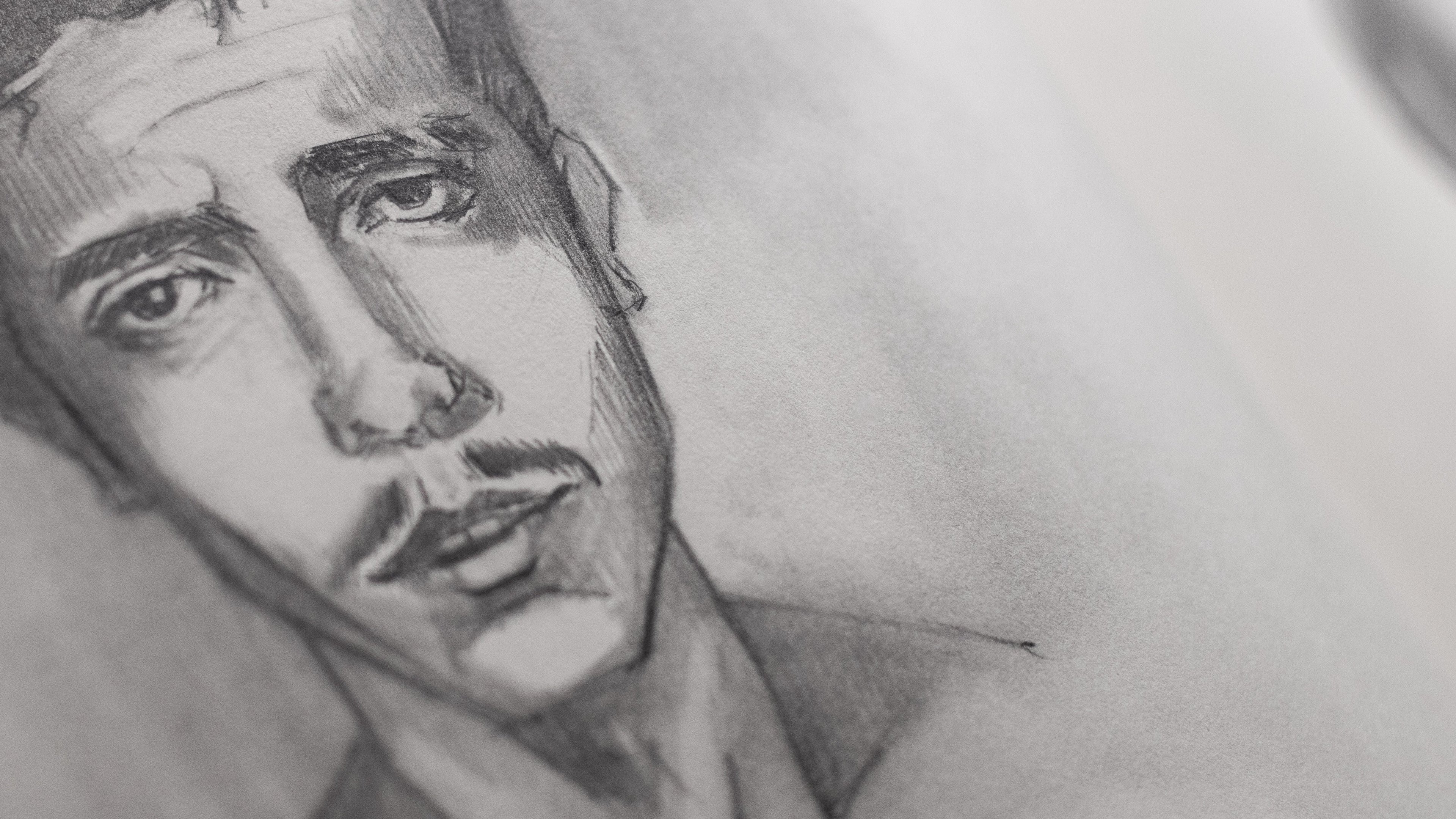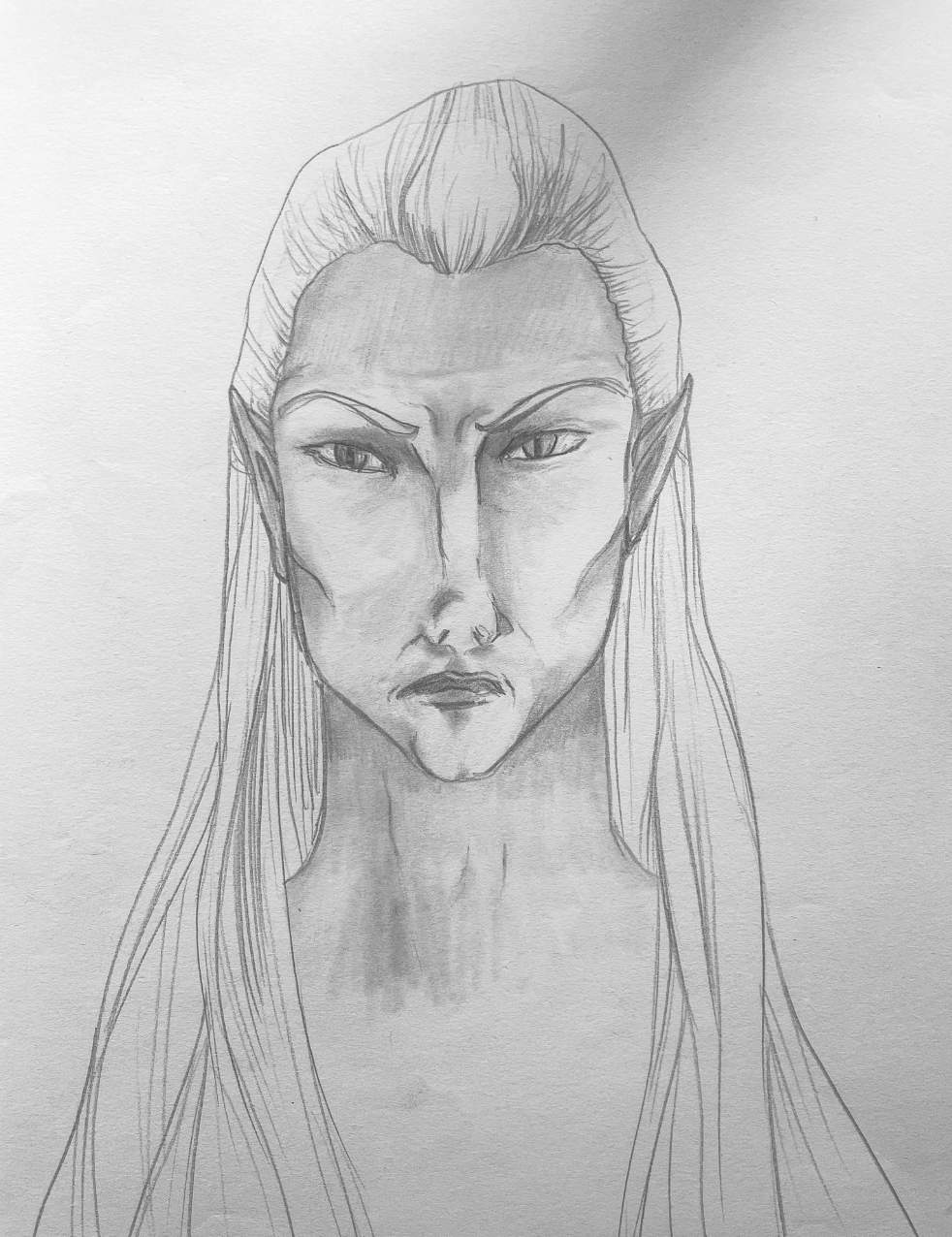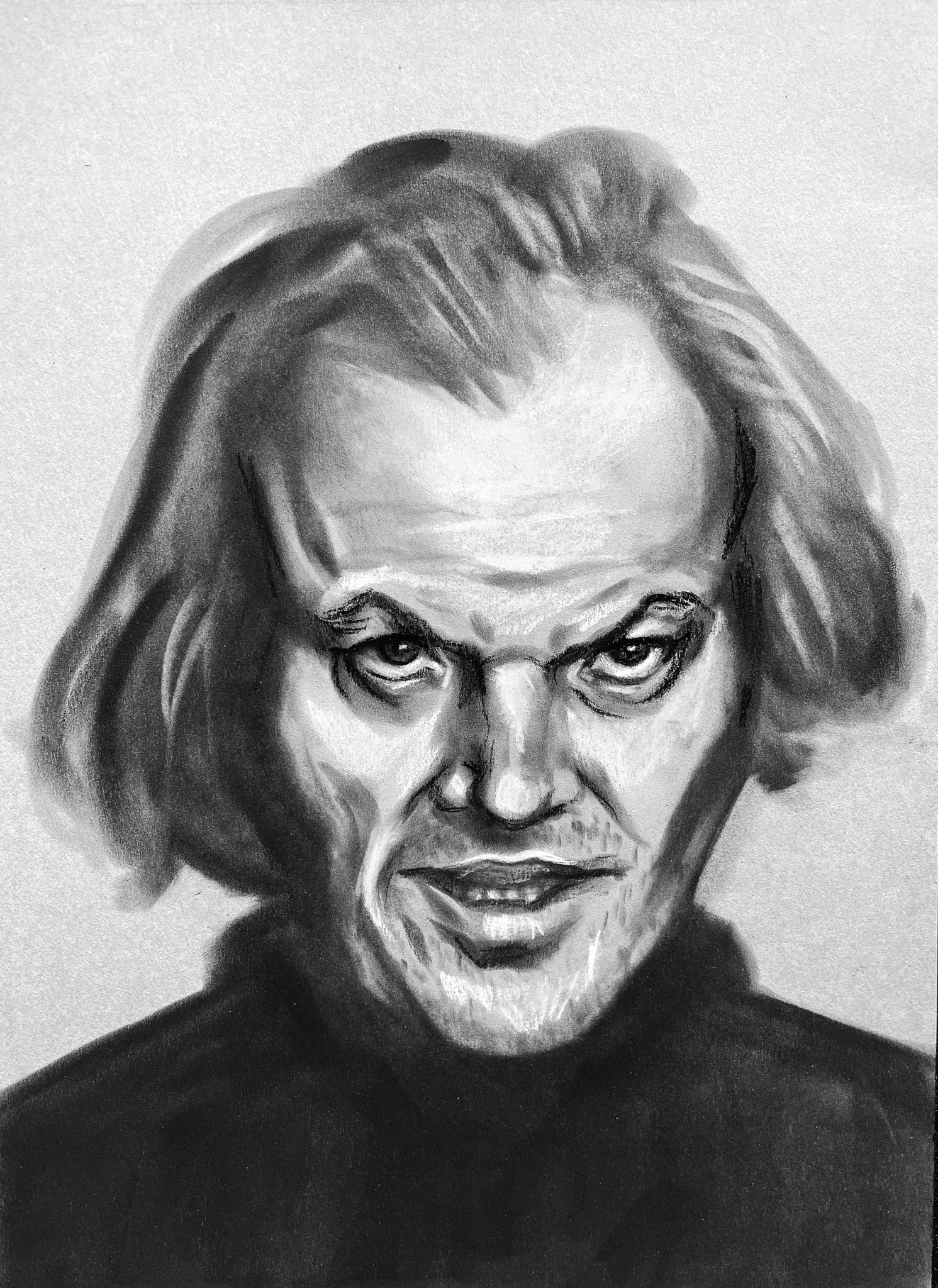
Portrait Drawing for Beginners
Learn how to draw any face you want, quickly, accurately, and in your own style.

Do your portraits look a bit like this?
Do they feel flat, and lifeless? Lacking realistic proportions? Looking nothing like what you intended?
And does drawing them feel like flailing around in the dark, desperately trying to place facial features in their right places and fit them all inside the face? Do you find yourself using your eraser more than your pencil? Redrawing the eyes and mouth so many times, you’ve practically etched them into the paper? Working for hours on a portrait only to step back and realize…that it still looks like crap.
Great!
Then you and I understand each other.
We know how freakishly hard it is to capture the human face in art. 😅
And we’re frustrated with all of the confusing and conflicting advice out there on portrait drawing. You know, the kind that leaves you thinking “I thought this was supposed to be fun…”
It took me many months of fumbling, cursing, and struggling to figure out that drawing portraits didn’t have to feel that tedious. That it didn’t require anatomy lessons or complicated wireframe models. That it could actually be simple and straightforward and enjoyable.
It was when I realized that, that I could finally start practicing the right way. And improving my portrait drawings, dramatically.
Maybe you’re ready to do the same?
Introducing: Portrait Drawing for Beginners
In this course, you will learn the simple way to draw great portraits.
And you will learn it in less than an hour, because it truly doesn’t take longer than that. What takes time is practice. And after going through this course, you will know exactly how to practice portraits in a way that’s quick, intuitive, and lets you improve faster.
Since this is a course aimed at the complete beginner, there will be no anatomy lessons, or wireframe models, or generic blueprints for “what a face looks like.” (Am I the only one who’s bored to tears with seeing the same models of young, handsome, white people with their noses in the exact “right” places?) Because it is my experience that none of these things are really needed in order to draw great portraits.
What’s needed is learning how to observe what’s in front of us honestly, and capturing it with our hand artfully.

“This class was super helpful! I’ve always been reluctant to draw portraits but this gave me some actionable tactics to make it seem more doable. I’m seeing improvement after some initial practice!”
- Toby Sterrett

“Truly great explanations and examples of process. Also appreciated the wide range of skin tones demonstrated!”
- Manda W

“This class was great for me! Louise was very encouraging and presented information in a very clear and relaxed way. Step by step demonstrations were very helpful and as a beginner i felt I learned a lot and can already see an improvement in my work. Thank you.”
- Helen Paisley
You'll learn...
- The most common mistakes we make in our portrait drawings as beginners. (And sometimes as non-beginners too.) And how to avoid them.
- Why the reference photo makes or breaks your drawing. (And how to pick really great ones.)
- How to look at the human face like an artist, and not like a regular mortal person.
- How to start your portrait drawing the right way, for minimal frustration, erasing, and later disappointment.
- Why the details of the face matter a lot less than you think, and what to focus on instead.
- How to nail the likeness of a person, without spending 8 hours, and without wanting to tear your eyebrows off.
- How to stop feeling like a slave to realism, and claim your right to artistic freedom.
- How to develop your own style of drawing the human face, and not needing to follow a tutorial on “how to draw an eye” ever again.

The Curriculum
Tools and materials for portrait drawing
My best recommendations for pencils, erasers, paper, and other drawing tools.
Common portrait drawing mistakes
What makes a portrait drawing look "bad" vs. great? Breaking down the most common mistakes we make that lead to failed drawings.
How to pick the right references for portrait drawing
The reference makes or breaks the drawing, especially as a beginner. Learn about what to look for in a reference, so that you can pick ones that make the drawing process easier and more fun for you.
How to sketch out a portrait
Where does one even begin to tackle a portrait? Here, I walk you through the best way to start your drawing, to get the important parts right, and avoid overwhelm and frustration.
How to draw facial features
Learn about correctly placing (and drawing) the facial features of your portrait.
How to shade your portrait and draw details
Learn about ways to render and shade your portrait, and how to add those final details. Also: how to get that damn likeness right...
Class project
A final class project to put your new skills to the test!
Full-length portrait drawing demonstration 1 (front view)
Here I show you, in real-time, my process of drawing a face in front view.
Full-length portrait drawing demonstration 2 (profile view)
Here I show you, in real-time, my process of drawing a face in profile view.
How to take your portrait drawings to the next level
Some final tips, advice, and exercises for elevating your portrait drawings.
This course is for you if:
- You prefer simple explanations and techniques, and don’t enjoy obsessing over minutia.
- You would rather experiment and develop your own style than copy an image, or another artist, pixel by pixel.
- You’re ready to put in the work needed to improve.

Take your portraits from this...

To this...
...using the techniques in this course.
Ready to get started?
Portrait Drawing for Beginners
✓ 9 video lessons, including 2 full drawing demonstrations ✓ Accessible on any device, at your own pace ✓ Unlimited lifetime access ✓ 7-day money back guarantee

Frequently asked questions
How do I access the course?
The course is hosted right here on my website. You will first create an account, and then you’ll be able to log in at any time to access the course.
You can do this on your computer, phone, or any other device.
How long does it take to finish the course?
You can easily get through all the lessons in a weekend, or even a single day, depending on how much time you have and how quickly you work. I prefer not to prescribe specific time frames or practice schedules, because I know everyone is different, with individual starting points, preferences, and circumstances.
Reading and watching the content is one thing - absorbing the information and doing the exercises are another. The real work begins after you’ve finished the course. 😊
Will I be able to ask questions during the course?
Of course! There are comment fields underneath every lesson, where you can ask questions publicly and see replies to other students' questions. If you ever want to ask me a question privately, you can do that via email.
Can I get feedback on my work?
This is a self-paced course, designed to quickly teach you the techniques and help you kickstart your art practice. The exercises and course projects are tools for you to put new concepts into practice and see your progress. Nothing has to be shared or submitted for feedback.

